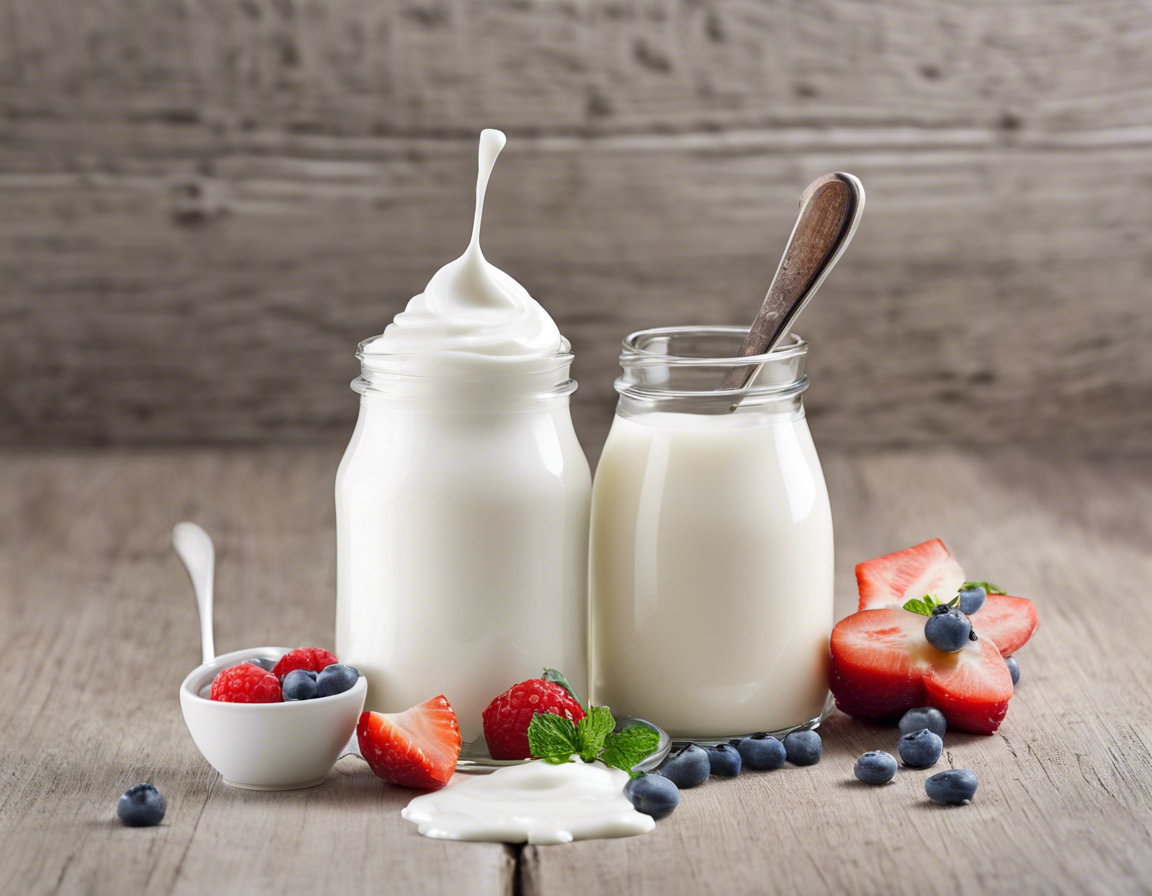Introduction
Yogurt and curd are two popular dairy products enjoyed by people all over the world. While they may seem similar in taste and appearance, there are key differences between the two that set them apart. In this comprehensive guide, we will delve into the distinctions between yogurt and curd, exploring their production processes, nutritional profiles, health benefits, and culinary uses.
Production Process
The primary difference between yogurt and curd lies in the production process. Yogurt is made by fermenting milk with specific lactic acid bacteria such as Lactobacillus bulgaricus and Streptococcus thermophilus. The milk is heated to a certain temperature to kill any harmful bacteria, then cooled and inoculated with the bacterial cultures. The mixture is left to ferment for several hours until it thickens into yogurt.
On the other hand, curd is a dairy product that is traditionally made by curdling milk with edible acidic substances like lemon juice, vinegar, or yogurt culture. The curdling process causes the milk to separate into curds (solid part) and whey (liquid part). The curds are then drained and pressed to form curd.
Nutritional Profile
Both yogurt and curd are rich in essential nutrients such as protein, calcium, vitamins, and probiotics. However, there are some differences in their nutritional profiles. Yogurt, due to its specific bacterial strains, is known for its probiotic content, which promotes gut health and boosts the immune system. It also contains higher levels of calcium and vitamin B12 compared to curd.
Curd, on the other hand, may have a slightly higher protein content than yogurt, depending on the milk used and the curdling process. It is also a good source of phosphorus, magnesium, and potassium. However, curd may not always contain live cultures like yogurt, unless yogurt culture is used in its preparation.
Health Benefits
Both yogurt and curd offer various health benefits due to their nutrient content and probiotic properties. Regular consumption of yogurt has been associated with improved digestion, reduced inflammation, and enhanced immune function. The probiotics in yogurt help maintain a healthy balance of gut bacteria, which is vital for digestive health.
Curd is also beneficial for digestion, as the presence of probiotics can aid in alleviating digestive issues like bloating and constipation. Additionally, the calcium and protein in curd are essential for bone health and muscle function. Some studies suggest that the probiotics in curd may also have a positive impact on mental health by influencing mood and cognitive function.
Culinary Uses
Yogurt and curd are versatile ingredients that can be used in a variety of culinary applications. Yogurt is commonly consumed on its own or used in smoothies, parfaits, dressings, and marinades. It can also be incorporated into baked goods as a healthier alternative to butter or oil. Greek yogurt, known for its thick and creamy texture, is often used in dips and sauces.
Curd is widely used in Indian cuisine to make dishes like raita, kadhi, and paneer. It can be eaten plain or flavored with salt, sugar, or spices. Curd is also used as a tenderizing agent in marinades for meat and poultry. In some cultures, curd is enjoyed as a dessert with honey, fruit, or nuts.
FAQs (Frequently Asked Questions)
1. Can I use yogurt instead of curd in recipes?
Yes, you can substitute yogurt for curd in most recipes, as they have similar tangy flavors and creamy textures. However, be mindful of the consistency of the yogurt, as curd is thicker than regular yogurt. Greek yogurt is a good alternative for curd in terms of texture.
2. Is curd the same as cottage cheese?
No, curd is not the same as cottage cheese. Curd is a dairy product made by curdling milk with an acidic substance, while cottage cheese is a fresh cheese made by draining, pressing, and washing curds.
3. Are all yogurts probiotic?
Not all yogurts contain probiotics. Some commercial yogurts undergo heat treatment that can destroy the live bacterial cultures. To ensure you are getting probiotic benefits, look for yogurts that are labeled as containing live and active cultures.
4. Can I make yogurt at home?
Yes, you can make yogurt at home using a starter culture or a small amount of store-bought plain yogurt with live cultures. There are various methods available online for making yogurt at home with or without a yogurt maker.
5. Are yogurt and curd suitable for lactose-intolerant individuals?
Yogurt and curd are generally well-tolerated by lactose-intolerant individuals due to the fermentation process, which helps break down lactose. However, it is important to choose lactose-free or low-lactose options if you have severe lactose intolerance.
In conclusion, while yogurt and curd share some similarities, they are distinct dairy products with unique characteristics and benefits. Whether you prefer the creamy tartness of yogurt or the texture of curd, incorporating these nutritious foods into your diet can contribute to overall health and well-being. Experiment with different recipes and variations to discover the diverse culinary possibilities of yogurt and curd.
